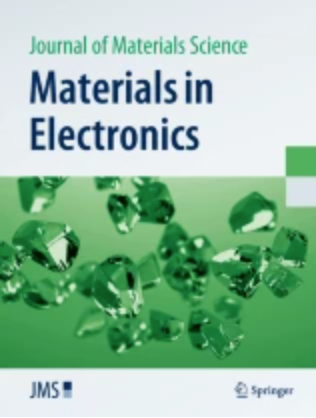摘要
铜纳米粒子浆料的烧结技术在宽带隙半导体器件中有着巨大的应用潜力。本研究提出了一种高性能多尺度铜纳米粒子浆料,以解决制备和储存过程中易氧化以及烧结温度高等关键问题。采用液相还原法简单高效地合成了尺寸为 20 至 140 nm 的多尺度铜纳米粒子。这些纳米粒子随后与还原复合溶剂混合,形成了铜纳米粒子浆料。基于这种浆料,在不同温度和持续时间下进行了压力辅助铜-铜接合实验。在氮气环境下于 240 ℃ 烧结后,铜-铜接头的平均剪切强度达到 33.3 MPa,当温度升至 280 ℃ 时,平均剪切强度甚至超过 60 MPa。此外,在还原表面涂层的作用下,多尺度铜纳米粒子可在环境空气条件下保存 20 天以上。此外,多尺度纳米粒子的紧密堆积效应和小尺寸纳米粒子的促进作用增强了粘合强度和致密的微观结构。所提出的多尺度铜纳米粒子浆料具有优异的抗氧化性和低温烧结性能,在功率器件封装和互连方面具有巨大的应用潜力。The sintering technology of Cu nanoparticle paste has significant potential for application in wide bandgap semiconductor devices. In this study, a high-performance and multi-scale Cu nanoparticle paste is proposed to solve the critical issues of easy oxidation during preparation and storage, as well as high sintering temperature. The multi-scale Cu nanoparticles with sizes ranging from 20 to 140 nm were synthesized simply and efficiently using a liquid-phase reduction method. These nanoparticles were subsequently mixed with a reducing composite solvent to develop a Cu nanoparticle paste. Based on this paste, pressure-assisted Cu–Cu bonding experiments were conducted at various temperatures and durations. The Cu–Cu joints achieve an average shear strength of 33.3 MPa after sintering at 240 °C in a nitrogen atmosphere and even exceed 60 MPa when the temperature is raised to 280 ℃. Additionally, with a reductive surface coating, the multi-scale Cu nanoparticles can be stored for over 20 days under ambient air condition. Besides, the enhanced bonding strength and dense microstructure are attributed to the close-packing effect of multi-scale nanoparticles and the facilitation of small size nanoparticles. The proposed multi-scale Cu nanoparticle paste exhibits excellent oxidation resistance and low-temperature sintering performance, which demonstrates significant potential for application in power device packaging and interconnection.

 求助内容:
求助内容: 应助结果提醒方式:
应助结果提醒方式:


